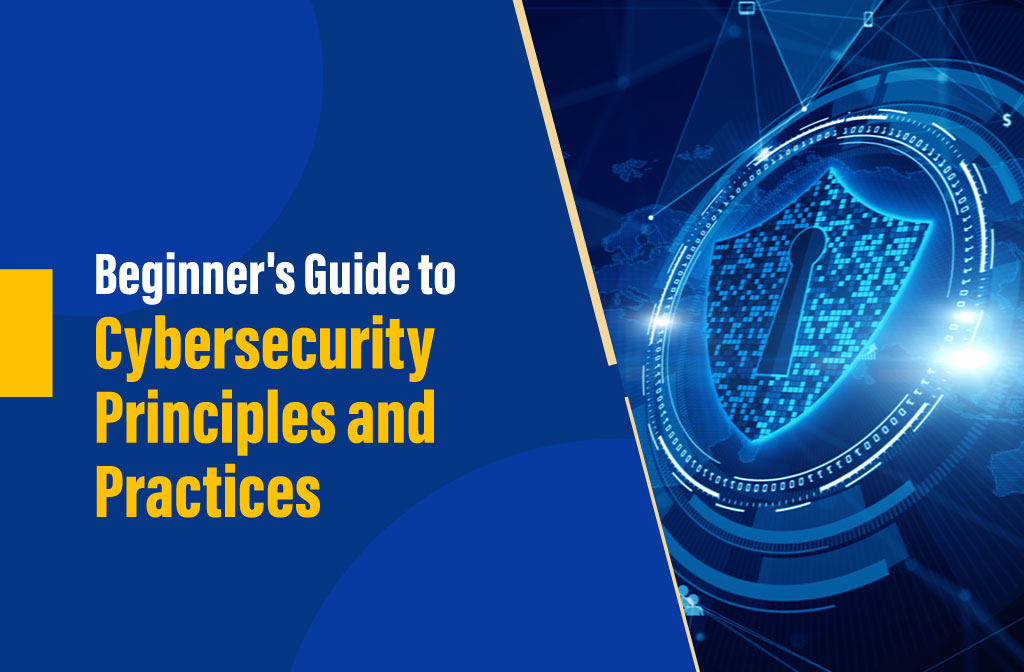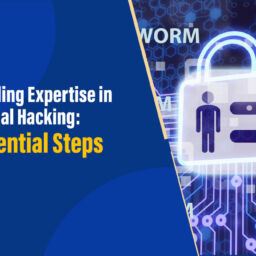
Today, most industries rely on technology and modern conveniences, whereas there is a potential threat behind every gadget utilized. The increase in cybercrime in devices and services makes industries seek cybersecurity professionals. The practice of protecting organizations and companies from phishing schemes, ransomware attacks, thefts, and financial issues is a high priority for cyber professionals. The best B-tech colleges in Coimbatore let the students learn the practice of protecting networks and programmes from digital attacks and interrupting the normal business process. Therefore, in this article, discover the concepts of cybersecurity principles and practices that clear the curiosity of what the role of cybersecurity professionals is.
Cybersecurity principles:
The goal of the cyber security principles is to give organizations general guidance on how to defend their data and systems against online attacks. The basic principles are:
- Detects and manages the security risks.
- Implementing controls to reduce the security risks
- Understanding cybersecurity measures and being able to identify cybersecurity incidents.
- Responds and recovers from cyber security incidents.
Myths about cybersecurity before getting to know the practices:
- Passwords alone shouldn’t be the only security measure used for data. Even with their importance, strong passwords are not resistant to hacking attempts by hackers. As a result, strong cybersecurity measures and a comprehensive defense are necessary.
- There are still some organizations that believe they can operate without encryption software. The idea that encryption will prevent data-hacking attempts is false. Protecting against ransomware attacks and cybercriminals requires the use of encryption.
- It’s a misconception that cybercriminals exclusively target large corporations, making them vulnerable. Because these businesses don’t have as strong security procedures. Therefore, it is essential to safeguard businesses against cybercrime.
Cybersecurity practices must be followed in organizations:
- Systems may be made more secure by implementing procedures for ensuring configuration management and a method for identifying basic technology versions. It is advisable to create a plan for eliminating or deactivating extra features from systems and promptly addressing identified vulnerabilities, typically through fixing them. If this isn’t done, there’s probably a higher chance that information and systems may be compromised.
- By creating and putting into practice simple policies and suitable architectural and technical solutions, you may lessen the opportunity that your systems and technologies will be attacked. The networks within your company most likely span multiple locations, and the adoption of cloud services and mobile or remote work makes it challenging to draw a clear network boundary. Instead of concentrating only on physical connections, consider the locations of your data’s processing and storage facilities as well as potential points of compromise for hackers.
- The risk of exploitation or compromise rises when users receive irrelevant system access or sensitive information rights. Every user should have access to the system rights and privileges necessary for their position. Extremely high system rights should only be granted under strict control and monitoring.
- Employees are essential to the security of their organization. It is necessary to make the employees aware of the potential cyber threats so they can do their jobs and also monitor and contribute to the company’s security.
- It is necessary to develop efficient policies and procedures for incident management. It will enhance business continuity, increase flexibility, help investors and consumers gain confidence, and may reduce any negative effects. However, organizations need to locate reliable internal and external resources for specialized incident management knowledge.
- Any program or thing that could have a negative, unwanted effect on computers is referred to as malicious software or malware. There is always a chance that malware could be shared, which could have a negative effect on your services and systems. The danger can be decreased by creating and putting into practice suitable anti-malware procedures.
- The goal of system monitoring is to identify real or suspected interruptions on corporate networks and systems. To successfully respond to attacks, adequate monitoring is necessary. Monitoring also enables you to verify that systems are being utilized correctly and in compliance with organizational policies. One of the most important skills for adhering to legal or regulatory standards is frequent monitoring.
- It is necessary to develop risk-based policies and processes that facilitate remote access to systems that are important to users and service providers, as well as mobile working.
Conclusion: In the digital world, the growth of technology from artificial intelligence, the internet of things, smart home automation, and various gadgets can easily store and communicate data with just an internet connection. And the potential of hackers who are smart enough to get into smart devices, even wearable smartwatches, to personal devices, which is sensitive information. Even the B-tech IT colleges in TamilNadu provide awareness about today’s challenges in cyber security. It is necessary to understand the crucial aspects of data security, which are a lack of encryption and authentication and organizations with poor cloud storage settings. If you’re an engineer, you can try to apply for certification courses in cybersecurity.

